Artillery. Large caliber. 152-mm howitzer D-1 model 1943 of the year
In several previous articles, we talked about the 152-mm howitzers of the Red Army, which to one degree or another were quite successful for their time. For some characteristics even surpassed foreign counterparts. For some inferior. But in general, meet the requirements of the time of creation. It was impossible to call them breakthrough, masterpieces, the best.
Today we will talk about a truly masterpiece. Tools, which admire not cease to the present. Moreover, this is admired both by those who design weapons today and those who use tools because of their official duties. The guns, which despite the fact that all 6 years were produced, from 1943 year to 1949 year, became the most massive 152-mm red howitzer, and then the Soviet army!
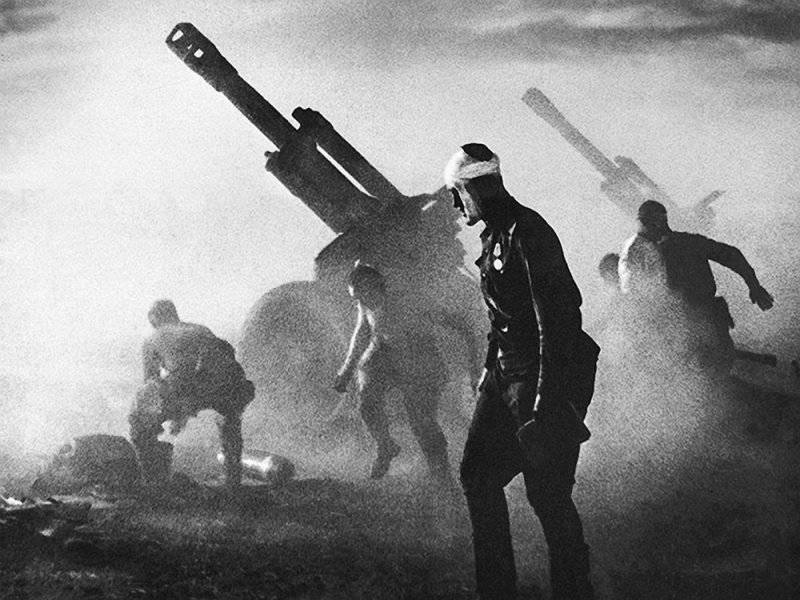
Tell me, who does not know this picture?
The record of this howitzer begins with the battles of the Great Patriotic War and ends with almost all the more or less significant military conflicts of the 20 century. And the military service of the system continues today in several armies of the world.
The author of the system is Fedor Fedorovich Petrov, the main designer of the design bureau of the plant No. XXUMX (UZTM), repeatedly mentioned by us.
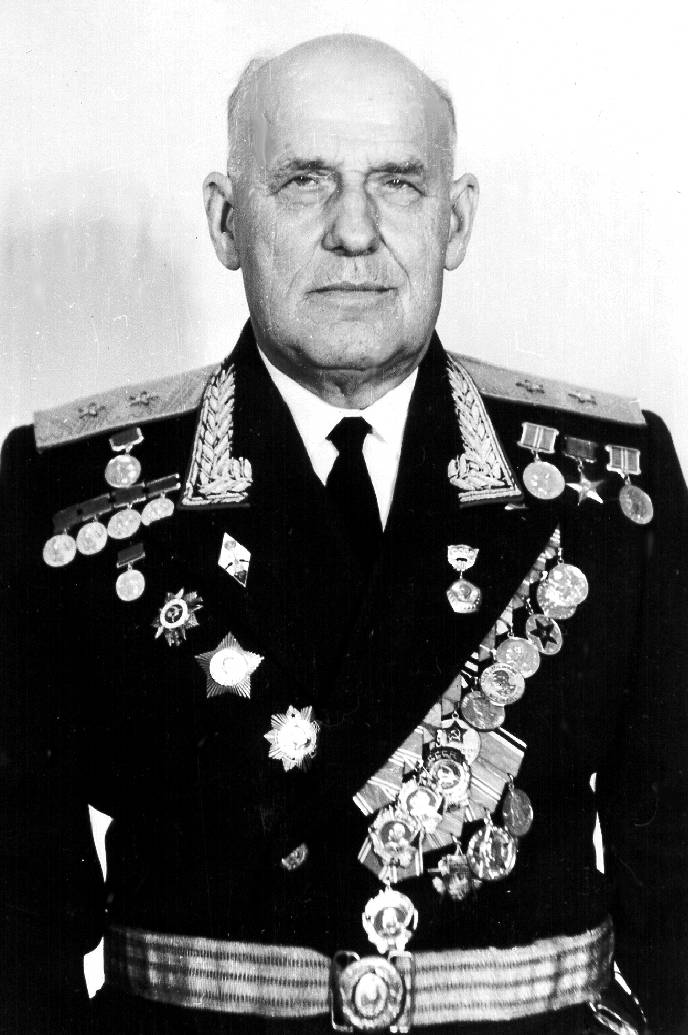
It was the experience and genius of F. F. Petrov and his design team that “helped” the new system to become operational in the shortest possible time.
But it is necessary to remember one more person. A person who, at least, was not a designer of artillery systems, but without a truly "howitzer" in penetration of solutions at all levels of character, without his organizational skills, the fate of the masterpiece could not have been so triumphant.

This is the people's commissar of armaments Dmitry Fedorovich Ustinov. More known to most veteran readers of the USSR and Russian Armed Forces as one of the last USSR Defense Ministers (1976-1984).
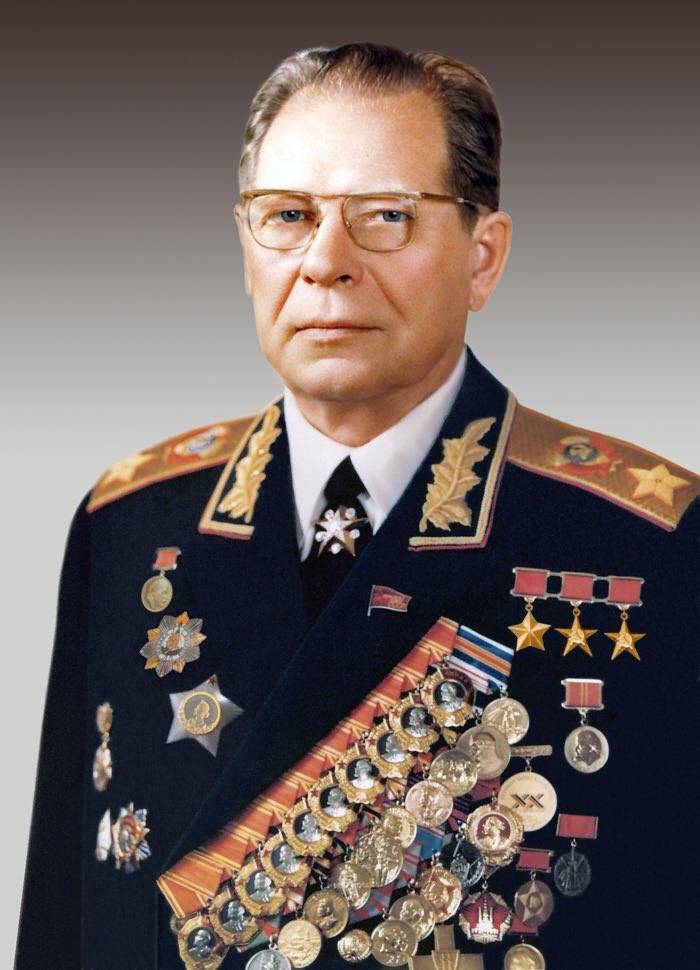
But back to the howitzer itself. In the M-10 howitzer article, we wrote about the cessation of the production of such guns in 1941. There are many materials about the reasons for this decision. Call and the shortage of tractor, which is true. And the complexity of the production, especially the mast, which is also true. And the complexity of the gun itself.
But, in our opinion, the main reason was the lack of capacity for production. The country needed guns. And the plants produced guns. From howitzers were made only M-30 and ML-20 (howitzer-gun). Production of which was established as soon as possible on the one hand, and which provided for the needs of the Red Army for the guns of this type.
The offensive near Moscow and further actions of the Red Army in 1942 was a crucial stage in the attitude towards howitzers for designers. It became clear that the army goes on the offensive. So, the army will soon require powerful, mobile artillery systems.
KB began, on their own initiative, in their free time, to design such systems. However, in wartime conditions, the main requirement for designers was not revolutionary ideas and developments, but the possibility of organizing production in the shortest possible time with existing facilities.
This is where the talent of Petrov and his team came in handy. The solution was found to be truly brilliant. To impose the M-10 howitzer barrel group, the power and production technology of which has been preserved, to the well-proven 122-mm howitzer M-30 gun carriage. And thus combine the power of the X-NUMX-mm howitzer M-152 and the mobility of the X-NUMX-mm divisional howitzer M-10.
Probably, we can consider the new howitzer as a duplex of two systems, M-10 and M-30. At least for its predecessor, the M-10 howitzer D-1 is a duplex without any reservations.
Then the detective begins. At the beginning of 1943, the people's commissar Ustinov arrives at the plant number 9. After checking the production and meeting with the plant management, Petrov brings the People's Commissar the calculations of a new howitzer.
13 April from Moscow, the phone rings. Ustinov informs Petrov about the GKO decision on the supply of 5 products to 1 in May 1943 for field testing at the Gorokhovetsky testing ground.
May 5 at the site begin testing two prototypes. The difference between the samples was in small differences in recoil devices. True, one sample has already been tested at the factory. The second was from scratch.
5 and 6 may guns were seriously tested. A total of 1217 shots were made. The rate of fire of the gun, both with corrections and without correction, was the 3-4 shot per minute! Already 7 May site has issued a report that the troubleshooting howitzer D-1 can be recommended for adoption.
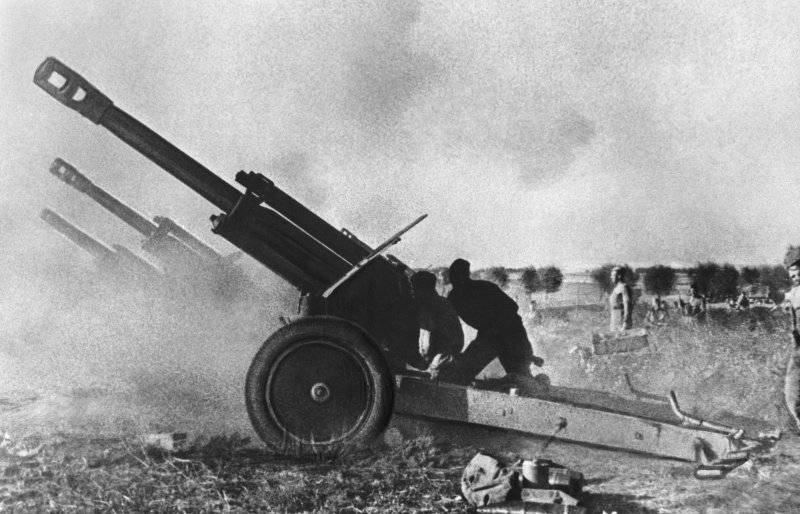
The GKO decree of 8 August 1943 of the year D-1 was put into service under the name "152-mm howitzer sample 1943 g." Its gross production was started in 1,5 of the month at plant number 9. This plant was the only manufacturer of the D-1.
Howitzer device:
- beds of sliding type;
- breech (breech);
- shield armor plate;
- Nakatnik and skater, constituting recoil devices;
- howitzer barrel;
- muzzle brake DT-3;
- wheel travel (KPM-Ch16 howitzer wheels with GK 1250 200 tires);
- suspension suspension.
The gun car howitzers were bed, suspension and wheel travel. The barrel group consisted of a breech, recoil devices, barrel with a muzzle brake.
What solutions did FF use? Petrov in the design of the D-1? on closer examination, it turned out that in this construction there is an element of another weapon.
The gun barrel is beyond doubt. Howitzer 152-mm model 1938 of the year. With the same carriage story. Improved gun howitzer caliber 122-mm M-30. Sighting device also from the M-30 howitzer. But with the shutter question. Petrov used a slide from the howitzer 152-mm sample 1937, ML-20.
As you can see, from a technical point of view, the design is quite perfect. Although, in order to simplify production, improve technology, changes are still carried out.
So, the beds of the guns of the first edition were completely riveted, and the guns of the later releases of the hull were welded.
Later release howitzers also had rollers for rolling by hand. The pin of the roller was inserted into the hole of the beam.
Performance characteristics:
Weight
in the stowed position, kg: 3 640
in a combat position, kg: 3 600
Vertical angles, degrees: -3 ... + 63,5
Horizontal angles, degrees: 35
Cannon rate of fire, rds / min: 4
Firing range, m: 12 400
OFS weight, kg: 40
Maximum transport speed, km / h: 40
Calculation people: 8.
If you look at the statistics on the release of the D-1 howitzer during the Great Patriotic War, a completely wrong impression is created about the number of these powerful weapons in our army. In many sources the information is given fairly "streamlined." During the war, released about 1000 howitzers.
The picture changes completely if you look at the release of systems by year.
1943 year - 84 pieces.
1944 year - 258 pieces.
1945 year - 715 pieces.
1946 year - 1050 pieces.
1947-49 years - by 240 pieces.
As can be seen from these data, the growing needs of this particular instrument testify precisely to the fact that the howitzer has “entered”.
The authors managed to talk with an officer who worked on these howitzers in Soviet times. He shared some interesting details of shooting from this gun.
When shooting on soft ground, it is necessary to make flooring under the wheels. When firing at elevation angles above 37 degrees, a moat is pulled out between the beds. In exceptional cases, shooting is possible when the beds are not apart. The horizontal firing angle is 1,5 degrees. In all cases, when shooting under the coulters, wooden bars are fixed.
The appearance in 1943 of these howitzers significantly increased the mobility of Soviet tank and motorized parts. The howitzer, thanks to its "swiftness", kept pace with the rapidly advancing units of the Red Army. This means that the contribution of this system to the war is undeniable. And this howitzer rightfully occupies a place in Russian and other museums.
Finishing the article, I want to once again admire the genius of our designers, who in the most difficult conditions of war could create a great weapon. A gun that became a teacher to many Soviet and even Russian artillerymen.
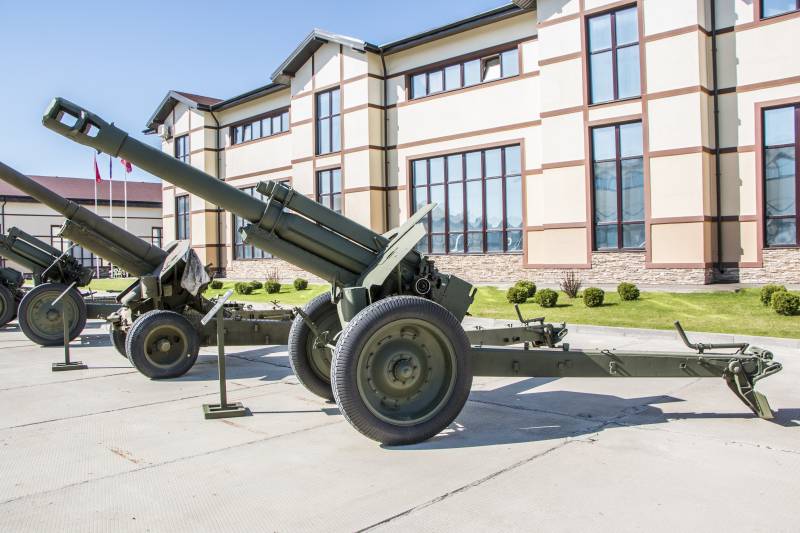
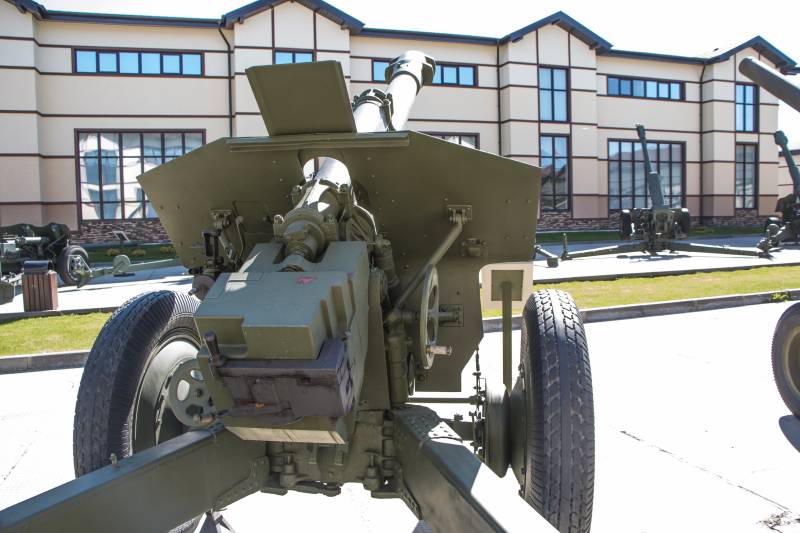
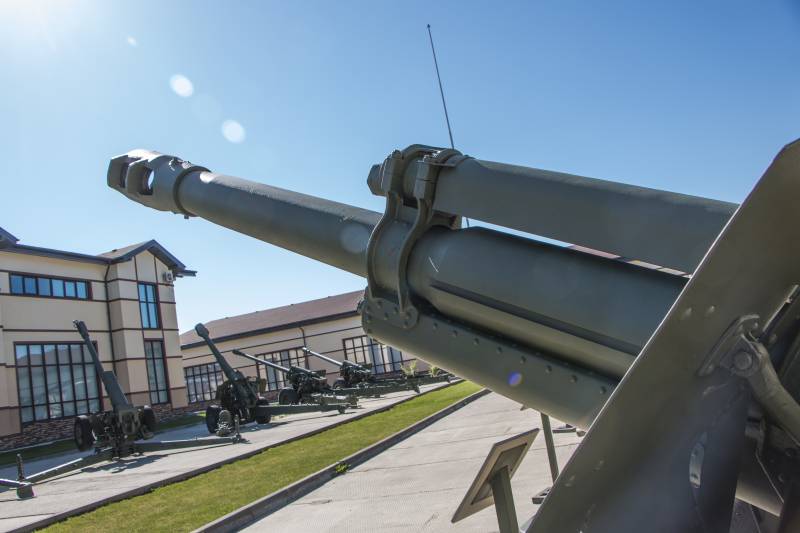
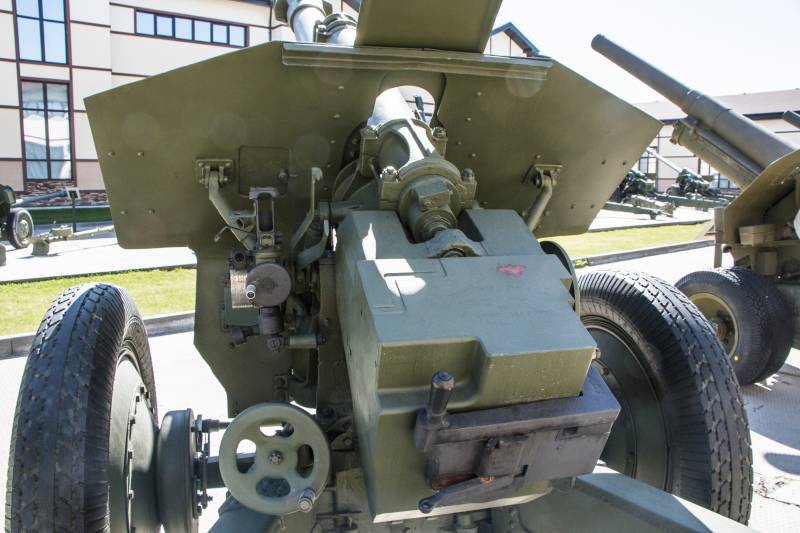
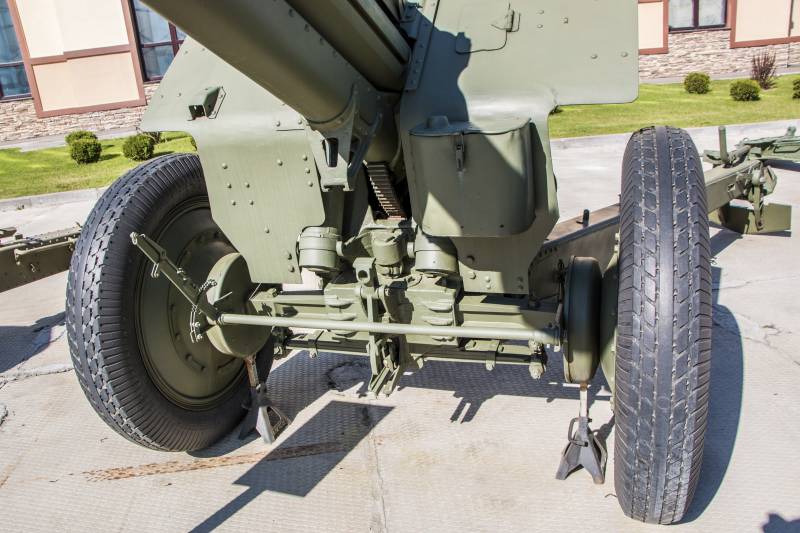
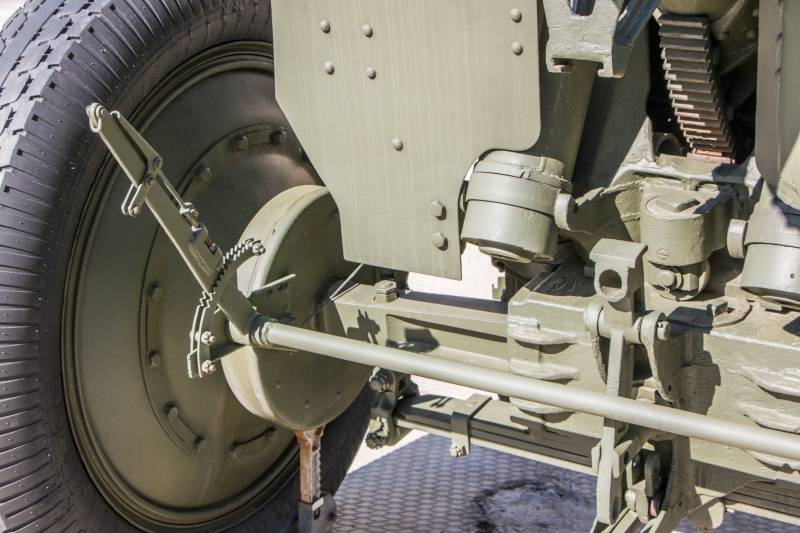
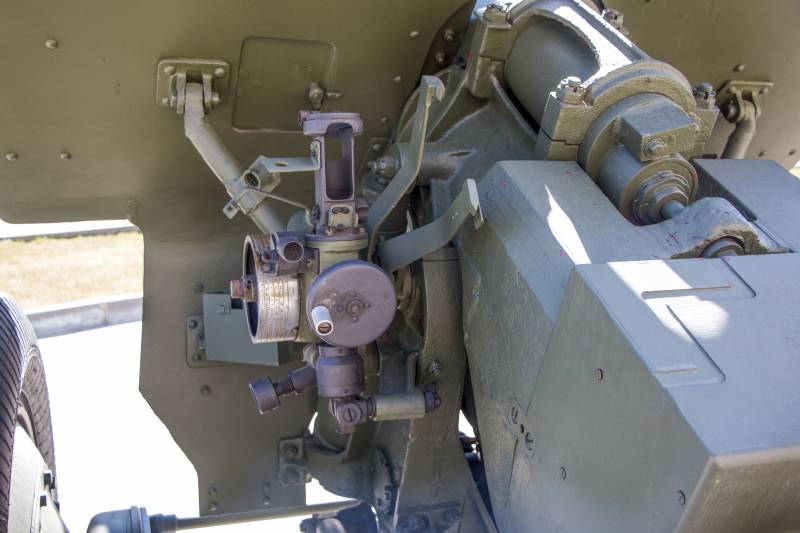
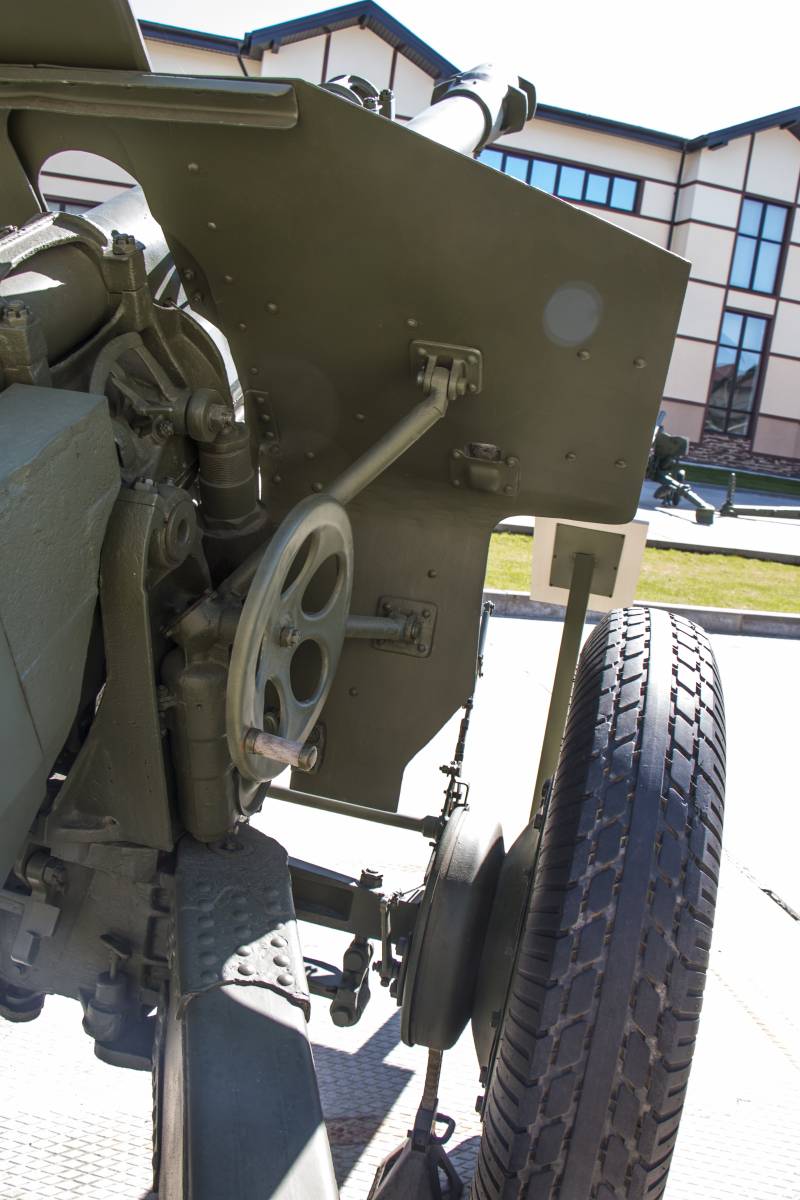
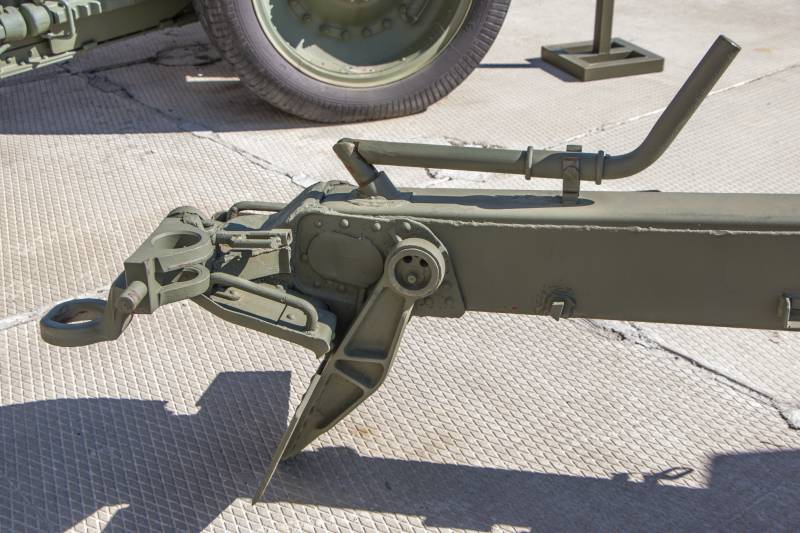
Information